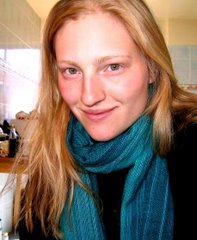(I was in Sucre from August 19th to August 21st.)
I arrived in Sucre from Potosí after a 3 hour taxi ride in which our driver used both lanes of traffic to round the corners at 120km/h in a speed zone of 40km/h. About halfway through the ride, as I was attempting to sleep in order to avoid constantly worrying for my life, a burning smell began wafting through the taxi. Our driver pulled over to check the brakes, which were obviously burning at this point, and then told us “Everything is fine, no worries.”
The next morning I headed off to Tarabuco, a small Quechua town about 3 hours outside of Sucre famous for its textiles. The bus ride there gave us beautiful views of the countryside, stark mountains and valleys with a few cacti here and there, an incredibly blue sky contrasted against the reds, oranges, and yellows of the terrain. The town itself was pretty ordinary, and while the textiles were certainly beautiful, I was a bit disappointed that I had seen most of the merchandise previously in La Paz. I got bored walking around, and a bit annoyed by the less-than-passive sales techniques of the vendors (“Mamaciiiiita, por favor…”) I wandered to the edges of the town, past the tourist-friendly parts, to see the mountains and the countryside. It was incredibly rural, with a bit of farmland, some animals sleeping peacefully. I saw few farmers dressed in traditional textiles herding a line of pigs, and I saw a few women taking a break in the shade of a large tree. It was such a relief to get away from the bustle of the inner markets.
Back in Sucre, I was a bit disappointed by how many museums and churches were closed, contrary to the indicated hours of operation. The city is filled with gorgeous white buildings, which gives it a very peaceful air (even if some of the buildings are a bit dirty.) I got a chance to see the Textile Museum, which had a beautiful array of weavings and explanations of the traditions, and also the convent La Recoleta perched on top of a hill, affording a gorgeous view of the city. While I was waiting to buy my entrance ticket into the convent, I saw a woman sitting in the office – it took me several minutes to realize that the skin hanging off of her face was not because she was old, but rather because she was so thin (and yet she was still carrying a heavy load on her back.) I could see the ribs protruding from her chest, and as I looked down at her legs I realized that her calves were thinner than her knees.
Later that day I sat down in the main plaza to take a break, and was immediately approached by an outgoing shoe-shine boy who wanted to polish my beat up converse. I politely declined the offer, but started chatting with him about his life…he was 12 years old, he claimed that he was in school, and his parents lived in the countryside. After about 5 minutes I found myself surrounded by a group of about 5 shoeshine boys, all trying to get me to buy them food or give them money. Unfortunately the original boy wandering away, and I was left to fend off the others, who weren’t nearly as charming. I kept telling them “No, it is not my responsibility to buy you food or give you money.” Part of my really wanted to indulge them, but I knew that it would just reinforce annoying behavior, and more than anything it would continue the wrong kind of relationship that locals have with tourists. Eventually I had to get up and leave because they would not leave my alone.
I think the most interesting part of Sucre for me was seeing the signs everywhere that were protesting about the capital. In contrast to the “La Sede No Se Mueve” signs in La Paz, everywhere in Sucre there were signs saying “Si, La Sede Se Mueve” or “Sucre Capital Plena.” The signs were even more visible there – in people’s windows and on cars – and there was even a car driving around the main plaza playing a propaganda song. There were also students who had tied themselves to the main building as part of a hunger strike. From my understanding, the controversy over the capital has economic and cultural components. I don't have a firm understanding of the controversy, so I can direct you to this article.
So now I am just milling around La Paz, waiting for my parents to arrive tomorrow evening. I’m eager to see their reception of Bolivia – at first it was such an alienating, foreign place to me, but now I feel so comfortable here. I’m also eager to practice my skills as family tour guide, because my parents don’t speak a bit of Spanish. Should be interesting…
miércoles, 29 de agosto de 2007
Suscribirse a:
Comentarios de la entrada (Atom)

1 comentario:
I like the way u have described the place.. Very good post.. i like the description of Tarabuco the best..
Birth Certificate
Publicar un comentario